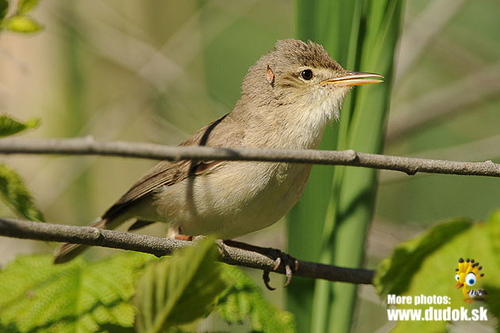
Eastern Olivaceous Warbler
The Eastern Olivaceous Warbler (*Iduna pallida*) is a small, Old World warbler known for its subtle olive-brown plumage and melodious song. It occupies a wide range across southeastern Europe, the Middle East, and parts of Africa. This warbler plays an important role in its ecosystem as an insectivore, helping to control insect populations. While not currently considered globally threatened, localized populations can be affected by habitat loss and degradation. It holds little specific cultural significance, but is a welcome sign of spring for birdwatchers within its range.
12-14 cm
Length
17-21 cm
Wingspan
Least Concern
Conservation Status
Distribution
The Eastern Olivaceous Warbler breeds across southeastern Europe (e.g., Balkans, Greece, Turkey), the Middle East, and parts of Central Asia. It migrates south for the winter, spending the non-breeding season in sub-Saharan Africa, primarily in a band stretching from Senegal east to Sudan and Ethiopia. Its altitudinal range extends from sea level to around 2000 meters.
Lifespan
The average lifespan in the wild is not well-documented, but likely similar to other small passerines, around 2-5 years. Some individuals may live longer.
Eastern Olivaceous Warbler's Habitat
Habitat Types
Open woodlands, Scrubland, Gardens, Cultivated areas with trees and bushes, Oases, Riverine thickets
Climate Zones
Temperate, Mediterranean, Semi-arid
Adaptations
This species thrives in relatively dry, open habitats. Its drab coloration provides camouflage amongst foliage. It is well-adapted to gleaning insects from leaves and branches.
Variations
Several subspecies are recognized, including *Iduna pallida elaeica* (most of Europe and the Middle East), *Iduna pallida reiseri*(North Africa), and *Iduna pallida pallida* (Egypt).
Appearance
Breeding Plumage
Plumage is relatively consistent throughout the year. It's a pale olive-brown above and buffish-white below.
Seasonal Feather Changes
No significant seasonal variation in adult.
Sex Based Plumage Differences
Males and females are visually very similar.
Notable Features
Pale supercilium (eyebrow stripe), Short, fine bill, Rounded tail
Diet and Feeding
Primary Foods
Insects, Spiders, Larvae, Small invertebrates
Foraging Behavior
The Eastern Olivaceous Warbler actively forages in trees and bushes, gleaning insects from leaves and branches. It may also hover briefly to pick insects from foliage.
Specializations
Its relatively fine bill is well-suited for catching small insects.
Seasonal Diet Variations
Diet is primarily insectivorous year-round, but may include some small fruits or berries during the non-breeding season when insects are less abundant.
Behavior
Social Structure
Generally solitary or found in pairs during the breeding season. May form small, loose flocks during migration.
Communication
A distinctive, scratchy, and somewhat repetitive song., Various call notes, including a sharp 'chak' and a soft 'trrt'.
Migration
The Eastern Olivaceous Warbler is a migratory species. Birds breeding in Europe and Asia migrate to sub-Saharan Africa for the winter. Migration occurs primarily at night.
Territorial or Group Behaviors
Males are territorial during the breeding season, defending their nesting area from rivals.
Conservation
Threats
Habitat loss and degradation (due to agriculture, urbanization, and deforestation), Pesticide use (reducing insect prey), Climate change (potentially affecting breeding success and migration patterns)
Protection Programs
General habitat conservation measures within its range., Some populations benefit from protected areas like nature reserves.
Local National Laws
Protected under various national and international bird conservation laws, such as the EU Birds Directive.
Population Trend
Stable
Population Estimates
The global population is estimated to be between 14,000,000 and 31,999,999 mature individuals.
Interesting Facts
The Eastern Olivaceous Warbler was formerly considered a subspecies of the Western Olivaceous Warbler.
It was split into a separate species based on differences in song, morphology, and genetics.
They can be difficult to distinguish visually from other *Iduna* warblers.
Careful attention to subtle plumage details and vocalizations is often required for accurate identification.
It is a known host of the Common Cuckoo.
The common cuckoo are brood parasites and lay their eggs in the nest of the Eastern Olivaceous Warbler.
Faqs about Eastern Olivaceous Warbler
What does the Eastern Olivaceous Warbler's song sound like?
The song is a scratchy, repetitive series of notes, often described as sounding like a squeaky wheelbarrow. It's quite distinct from other warblers in its range.
Where can I see an Eastern Olivaceous Warbler?
Look for them in open woodlands, scrubland, and gardens within their breeding range in southeastern Europe, the Middle East, and parts of Central Asia. During the winter, they are found in sub-Saharan Africa.
Are Eastern Olivaceous Warblers endangered?
No, they are currently classified as Least Concern by the IUCN. However, localized populations may be threatened by habitat loss.
Copyright @ Nature Style Limited. All Rights Reserved.
 English
English